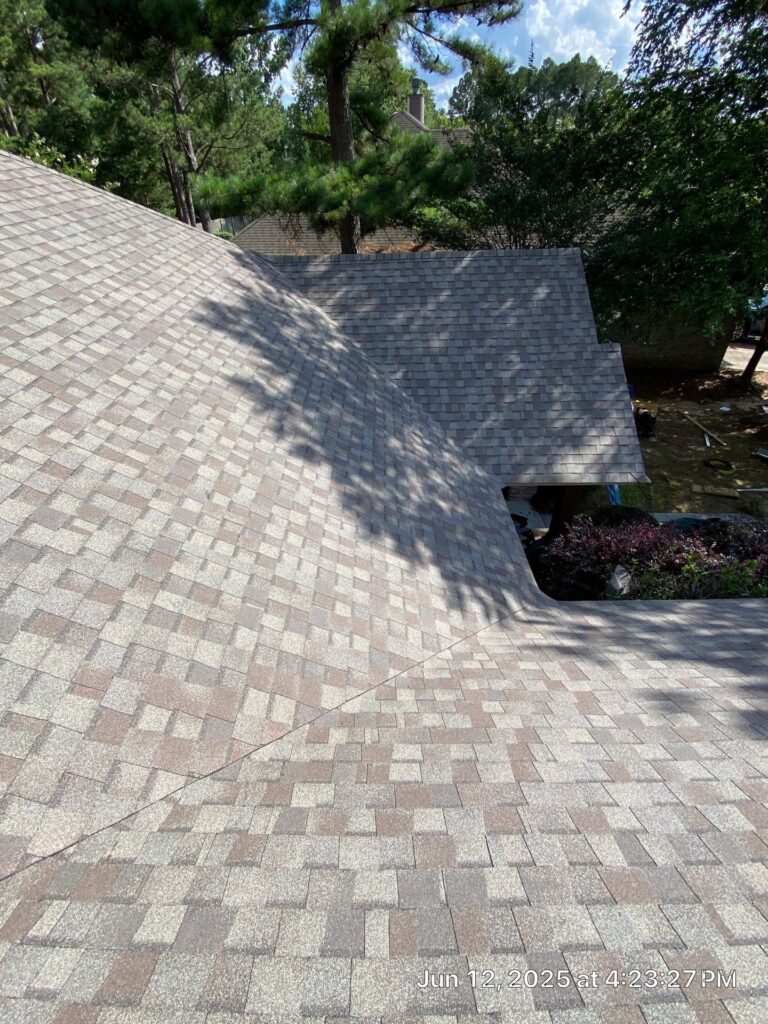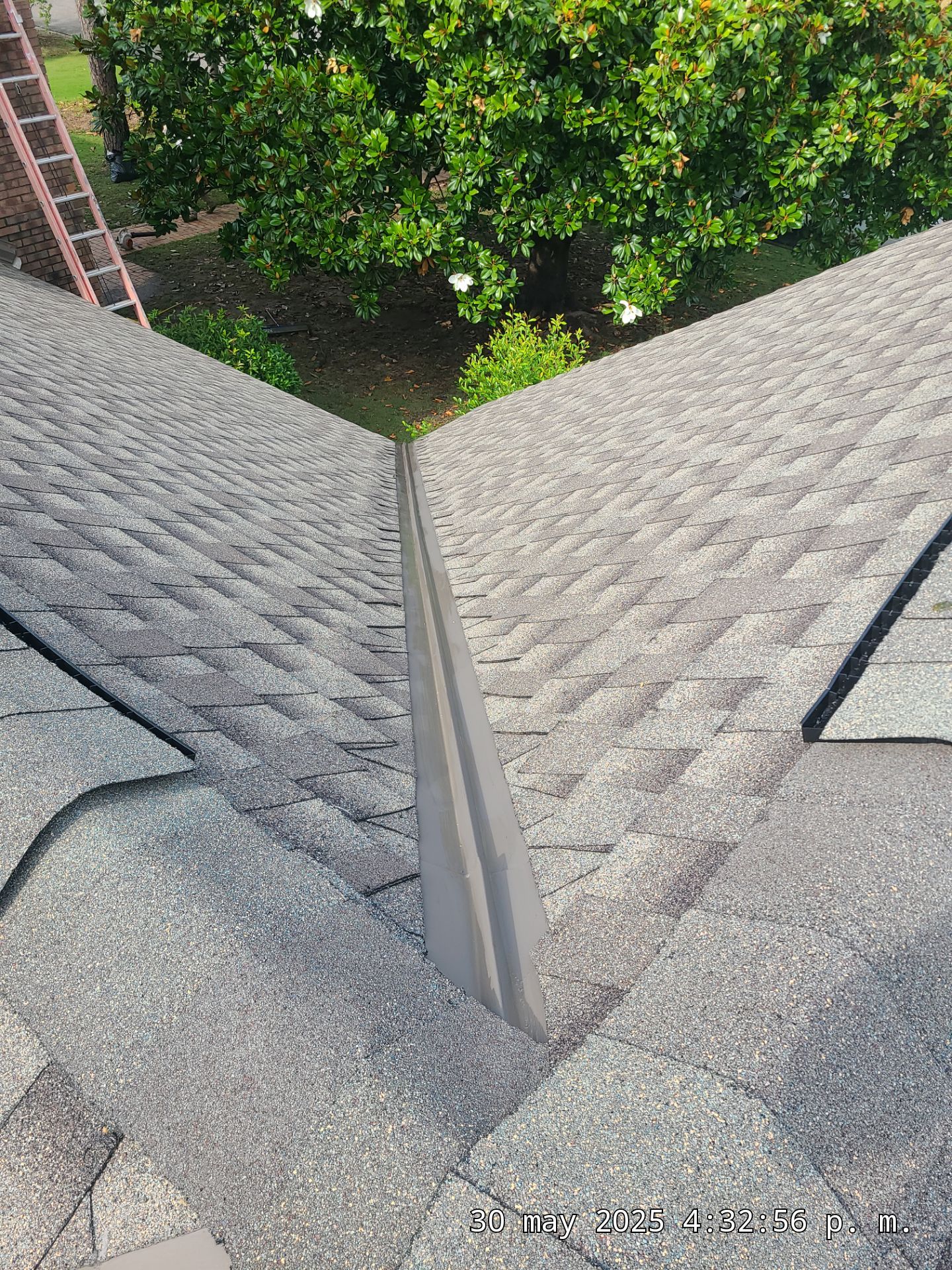A “valley” is the area where two roof slopes meet, forming a V-shaped channel that guides water and debris off your roof. After 40+ years in business, the Guyette Roofing and Construction team understands how proper valley installation is essential for directing water away from your home and preventing leaks. There are two primary types of valleys used in roofing: closed valleys and open valleys. Each has its unique characteristics, advantages, and aesthetic appeal. Here’s a breakdown of the differences between closed and open valleys to help you make an informed choice for your roof.
What is a Closed Valley?
A closed valley is a roofing method where shingles are laid directly over the valley, creating a seamless, shingle-covered channel. In this style, the shingles from both sides of the roof overlap and meet at the valley, creating a continuous, covered surface.
- Appearance: Closed valleys showcase your chosen shingles/shingle color, providing a more traditional and subtle look, as the shingles take center stage without the intrusion of metal elements.
- Waterproofing: In a closed valley system, the valley itself is covered with overlapping shingles, which serve as a barrier to water penetration. This is effective as long as the shingles are installed correctly and properly sealed by skilled professionals.
- Installation: Installing a closed valley requires skilled craftsmanship. The shingles must be carefully cut and aligned to ensure they form a continuous flow without gaps. The valley is essentially made entirely of shingles, and the area must be adequately sealed to prevent water from getting underneath.

What is an Open Valley?
An open valley, on the other hand, is a system where the valley is lined with metal flashing (often aluminum, copper, or steel), and the shingles are installed on either side of the metal. The metal flashing is left exposed, creating a visually distinct line down the center of the valley.
- Appearance: Open valleys offer a more modern and distinctive look, with the metal flashing clearly visible. This can be an attractive feature, especially when using materials like copper that can add a unique visual element to your roof. It can also complement more contemporary architectural styles, where the metal contrast is seen as a design feature.
- Waterproofing: The metal flashing in open valleys provides a durable, long-lasting barrier against water. This can reduce the risk of leaks in the valley area, making it a more reliable option for heavy rain or snow areas.
- Installation: Installing an open valley is generally considered easier than a closed valley, as the metal flashing is laid down first, and the shingles are cut to fit along the edges of the flashing. The metal flashing acts as the primary waterproofing layer, reducing the dependence on the shingles for water protection.


Which Option Is Right for You?
Choosing between a closed and open valley depends on several factors, including your budget, the climate in your area, and the style of your home. If you prefer a traditional, seamless look, a closed valley might be the right choice for you. However, if you live in an area with heavy rainfall or snow, or you prefer a more modern aesthetic, an open valley might be your best choice.
Ultimately, both systems can provide excellent water drainage and protection for your roof, but the right option will depend on your specific needs and preferences. Reach out to Guyette Roofing and Construction if you’d like to have one of our estimators evaluate which system would be best suited for your home!

